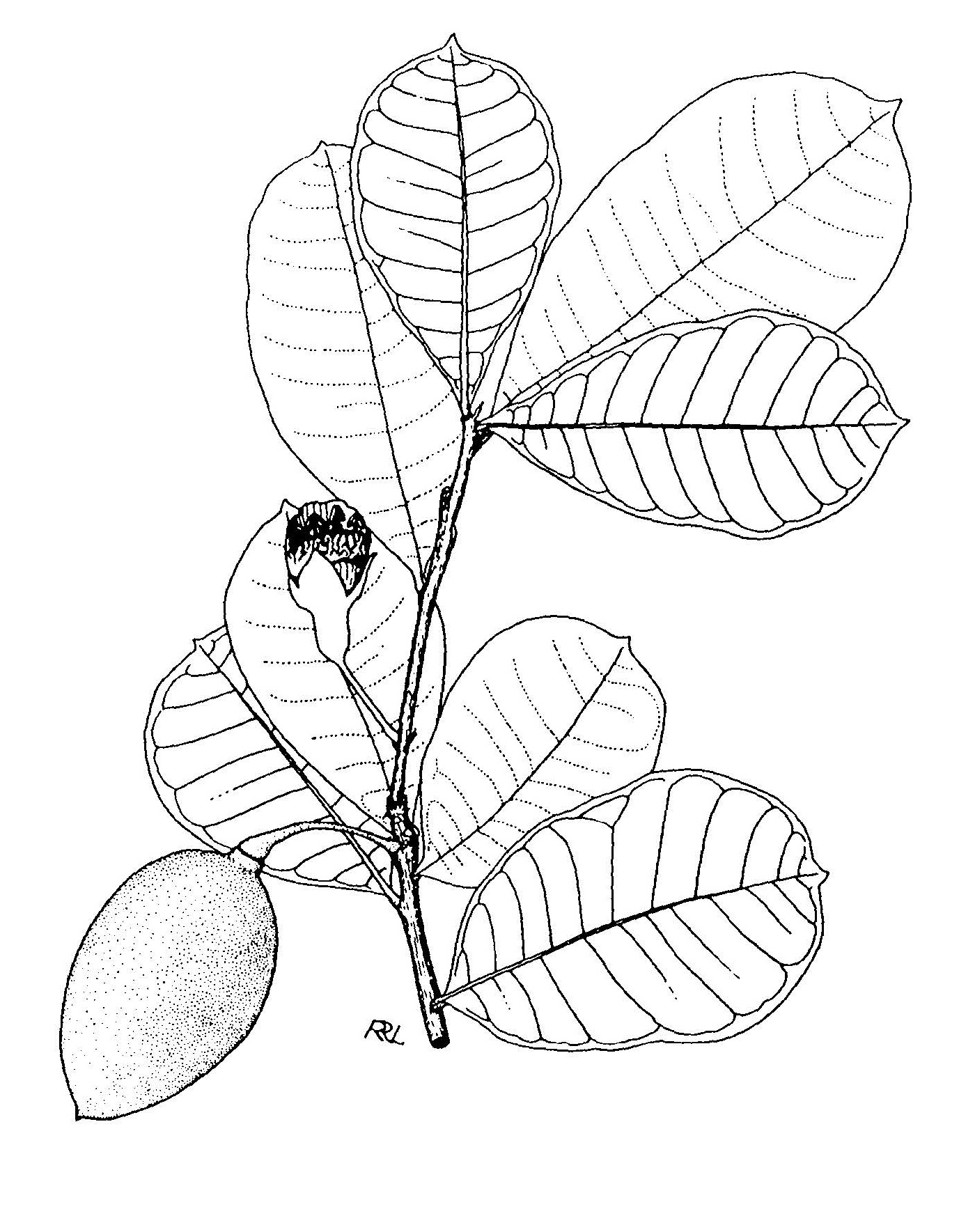
Small to medium tree to 40 ft. in height with a dense, rounded crown; trunk to 1 ft. in diameter. Limited to a few plants in moist areas
DESCRIPTION:
Bark: Gray, rough, ridged and furrowed. Leaves: Evergreen, alternate, simple; broadly oval to elliptic, 3 ½-6 in. long and 2 ½- 3 in. wide; thick, leathery, often broadest beyond the middle, apex rounded with a short point; shiny, dark green above, dull, light green beneath. Flowers: Showy, light green, bell-shaped; 1½-2 in. long and ¾ in. broad, borne individually.Flowering occasionally throughout the year. Fruit: Egg-shaped to elliptic, dark green, 2 ½-4 in. long, and 1 ½-2½ in. in diameter, thin-walled; interior whitish pulp with numerous black, heart-shaped seeds to 5/8 in. long.
GROWTH RATE: Moderate. SALT TOLERANCE: Low to medium.
DROUGHT TOLERANCE: Low-medium. PROPAGATION: Seeds.
LANDSCAPE USES/LIMITATIONS: An ornamental shade tree with attractive dark, shiny foliage. Does not transplant easily.
USES: Construction, Food, Beverage, and Medicine. Light brown to pinkish wood is hard and heavy; used for tool handles and plows. Seeds are edible and used like cocoa in a refreshing drink. Preparations from the pulp of the fruit have been used in medicinal remedies.
CONSERVATION NEEDS: Very few of these trees remain in the wild on St. Croix and their use in landscape plantings is essential to insure their survival throughout the Virgin Islands.
Copyright ©2018. This sandbox portal development is powered by Symbiota software. Usage Policy.


